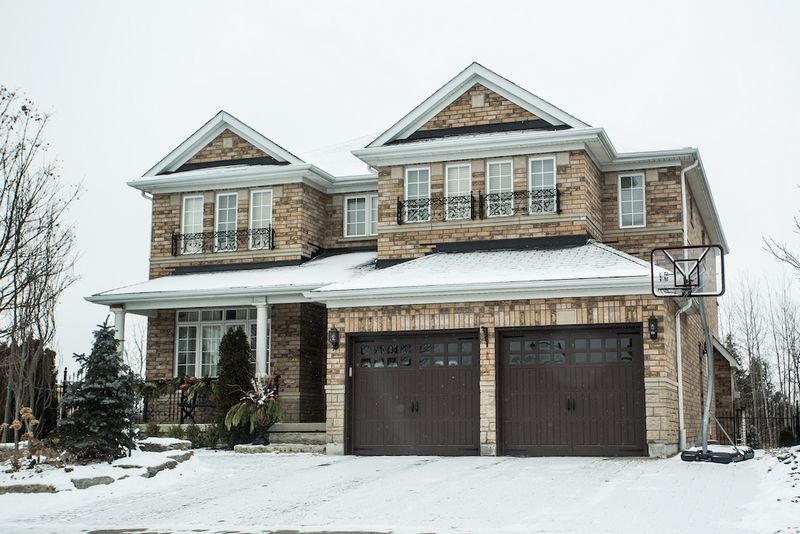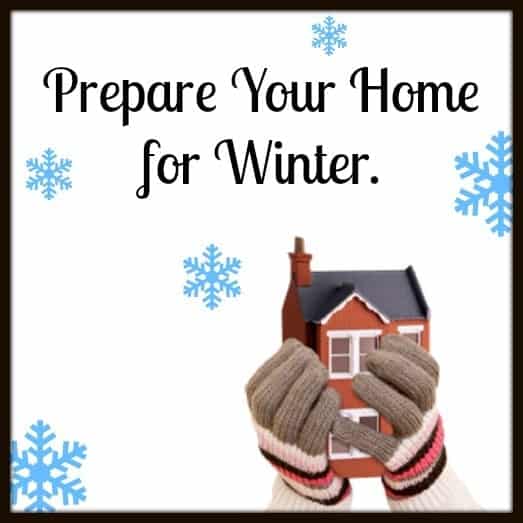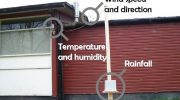
Preparing Your Home for Winter
With winter just around the corner, it’s important to start thinking about how you can keep your home warm and cozy during the cold months. Taking a few essential steps now can help you avoid costly repairs and ensure that you and your family stay comfortable throughout the season.
The first step in preparing your home for winter is to assess your heating system. Check your furnace or heating unit to make sure it’s in good working order and schedule any necessary maintenance or repairs. Additionally, if you have a fireplace, now is the time to get it inspected and cleaned. A cozy fire can provide added warmth and ambiance during the winter months.
Another crucial step is weatherproofing your home. Check for any drafts or air leaks around windows and doors, and seal them as necessary. Adding insulation to your attic or walls can also help to keep the cold air out and the warm air in. Don’t forget to inspect your chimney as well, as a properly functioning chimney can prevent smoke from entering your home and protect against potential fire hazards.
Next, it’s important to assess the condition of your roof. Snow and ice can be damaging to your roof, so make sure there are no loose or missing shingles. Clear out any debris or leaves from your gutters to prevent ice dams from forming. If you live in an area with heavy snowfall, consider investing in a snowplow or making arrangements for snow removal to keep your driveway and walkways clear.
Lastly, don’t forget to stock up on essential winter supplies. Have an emergency kit prepared with items such as batteries, flashlights, and warm blankets. Consider having a supply of ice melt on hand to keep your pathways safe and clear. And, of course, make sure you have plenty of firewood or fuel for your heating system to keep your home warm during those chilly winter nights.
Inspect and Clean Your Gutters
As winter approaches, it’s important to inspect and clean your gutters to ensure they are in good condition and able to handle the heavy rain and snowfall. Here are some essential steps to follow:
- Clear out debris: Remove any leaves, sticks, and other debris that may have accumulated in your gutters. This can prevent water from flowing properly and lead to water damage.
- Inspect for damage: Check for any cracks, holes, or sagging in your gutters. These issues can cause water to leak or overflow, potentially damaging your home’s foundation or causing ice dams.
- Remove any blockages: If you notice any blockages in your gutters or downspouts, use a garden hose or plumber’s snake to remove them. This will ensure that water can flow freely and prevent clogs.
- Check for proper drainage: Make sure that your gutters are angled correctly and that water is draining away from your home’s foundation. If necessary, adjust the slope or add extensions to the downspouts.
- Consider gutter guards: Installing gutter guards can help prevent debris from accumulating in your gutters. This can save you time and effort in the long run, as you won’t have to clean them as often.
By inspecting and cleaning your gutters before winter, you can prevent water damage to your home and ensure that they are functioning properly. This will give you peace of mind and help you stay warm and cozy indoors while the winter weather rages outside.
Check and Seal Any Air Leaks
One of the most important steps in preparing your home for winter is checking and sealing any air leaks. These leaks can cause drafts and make it more difficult to keep your home warm, leading to higher heating costs. Here are some areas to check for air leaks:
- Windows and Doors: Inspect the weatherproofing around your windows and doors. Replace any worn-out or damaged weatherstripping to prevent cold air from entering your home.
- Chimney: Make sure the damper is closed when the fireplace is not in use. If you don’t use your fireplace, consider sealing it off completely to prevent cold air from coming down the chimney.
- Attic: Check for any gaps or cracks in the attic and add insulation as needed. This will help prevent heat from escaping through the roof and save you money on heating costs.
- Basement and Crawlspace: Inspect the foundation walls for any cracks or holes. Seal them with caulk or other appropriate materials to prevent cold air from entering your home.
In addition to these areas, consider hiring a professional to inspect your home for any other potential air leaks. They can also perform a blower door test to identify areas of your home that need additional insulation.
By checking and sealing any air leaks in your home, you can improve its energy efficiency and keep it warmer during the winter months. This will not only make your home more comfortable, but it can also save you money on heating expenses.
Service Your Heating System
As the temperature drops, it’s essential to ensure that your heating system is in top condition to keep your home warm and comfortable throughout the winter. Here are the steps you should take to service your heating system:
- Inspect and clean the chimney: Before you start using your fireplace, make sure to have the chimney inspected and cleaned. This will help prevent any blockages or build-up that can lead to poor ventilation and increase the risk of carbon monoxide poisoning.
- Check the insulation: Insulation is key to keeping the warm air inside your home and preventing drafts. Inspect the insulation in your home, paying close attention to areas such as the attic, walls, and windows. Replace or add insulation as needed to ensure maximum energy efficiency.
- Shovel snow and clear pathways: It’s important to keep your heating system accessible and safe during the winter months. Regularly shovel snow and clear pathways to your heating equipment, such as the furnace or heat pump. This will prevent any blockages and ensure efficient operation.
- Have your furnace serviced: Schedule a professional inspection and maintenance for your furnace before the cold weather hits. A professional technician will check for any issues or potential problems, clean components, and ensure that your furnace is running efficiently.
- Weatherproof your home: Inspect windows and doors for any cracks or gaps that could let cold air in and warm air out. Seal these areas with weatherstripping or caulking to improve energy efficiency. Additionally, consider installing a programmable thermostat to regulate the temperature and save on heating costs.
By following these essential steps, you can ensure that your heating system is ready to keep you warm and comfortable throughout the winter season.
Prepare Your Plumbing
One of the most important aspects of preparing your home for winter is making sure that your plumbing is ready for the colder temperatures. Below are five essential steps to get your plumbing winter-ready:
-
Insulate exposed pipes: Insulating your exposed pipes can help prevent them from freezing and potentially bursting. Use pipe insulation sleeves or wrap them with heating tape to provide an extra layer of protection.
-
Drain and disconnect outdoor faucets: Before the first freeze, make sure to drain and disconnect any outdoor faucets and hoses. This will help prevent water from freezing in the pipes and causing them to burst.
-
Seal gaps and cracks: Check for any gaps or cracks in your home’s foundation and walls where cold air can enter and potentially freeze your pipes. Use caulk or weatherstripping to seal these openings and keep the cold air out.
-
Keep your home heated: Make sure to keep your home heated during the winter months, especially when the temperatures drop significantly. Keeping your home at a consistent temperature can help prevent your pipes from freezing.
-
Consider a backup power source: In case of a power outage during a winter storm, having a backup power source can help keep your heating system running and prevent your pipes from freezing. Consider investing in a generator to ensure that you have power even during an outage.
Following these essential steps will help prepare your plumbing for the winter season and prevent any damages or disruptions to your home’s water supply. By taking the necessary precautions, you can enjoy a warm and worry-free winter in your home.
Store and Protect Outdoor Furniture
As winter approaches, it’s important to take steps to protect your outdoor furniture from the harsh weather conditions. Here are a few essential steps to store and protect your outdoor furniture:
- Clean and Prepare: Before storing your outdoor furniture, make sure to clean it thoroughly. Remove any dirt, dust, or debris that may have accumulated over time. Use a mild detergent and water to clean the furniture, and allow it to dry completely before storing.
- Choose the Right Storage Location: Find a suitable location to store your outdoor furniture. It should be dry, sheltered, and away from direct sunlight. A garage, shed, or basement can be ideal storage spaces. If you don’t have enough space indoors, consider covering your furniture with weatherproof covers.
- Disassemble if Necessary: If your outdoor furniture is collapsible or can be disassembled, it’s a good idea to take it apart before storing. This will help save space and prevent any damage during storage.
- Protect Cushions and Fabrics: If your outdoor furniture has cushions or fabrics, remove them and store them separately. Make sure they are clean and dry before storing. Consider using sealable bags or containers to keep them safe from dust, moisture, and pests.
- Apply Weatherproofing Products: If your outdoor furniture is made of wood, metal, or other materials that can be affected by moisture, consider applying weatherproofing products. These can help protect the furniture from rain, snow, and extreme temperature changes.
- Regularly Check for Damage: Throughout the winter season, periodically check on your stored outdoor furniture for any signs of damage or pests. Address any issues promptly to prevent further damage.
By following these steps, you can ensure that your outdoor furniture remains in good condition and ready for use when the warmer weather returns. Taking the time to properly store and protect your furniture will extend its lifespan and save you from costly replacements in the future.
Check Your Roof for Damage
Inspecting your roof for damage is an important step in preparing your home for winter. Your roof is your first line of defense against the elements, so it’s crucial to ensure that it is in good condition.
1. Look for visible signs of damage: Start by visually inspecting your roof for any visible signs of damage. Check for missing or damaged shingles, cracks, or holes in the roofing. Pay attention to the area around the chimney or other roof openings.
2. Check the attic: Go up into your attic and look for any signs of water damage or leaks. Inspect the insulation for any signs of wetness or mold. Make sure that the insulation is properly covering all areas of your attic to prevent heat loss and improve energy efficiency.
3. Pay attention to the fireplace and chimney: If your home has a fireplace, examine the chimney for any loose or damaged bricks. Look for cracks or flaking mortar. Ensure that the damper is functioning correctly and sealing properly when closed. A damaged chimney can lead to leaks and other issues during the winter months.
4. Schedule a professional inspection: If you are unsure about the condition of your roof or if you find any signs of damage, it’s always a good idea to have a professional inspect it. They will be able to identify any underlying issues and recommend the necessary repairs or maintenance.
5. Maintain your roofing and heating system: Regular maintenance of your roofing and heating system is essential for keeping your home in good condition during the winter. Clean out your gutters and downspouts to ensure proper water drainage. Check your furnace or heating system to ensure that it is working efficiently. Consider hiring a professional to service your heating system before the cold weather arrives.
By checking your roof for damage and taking the necessary steps to repair or maintain it, you can ensure that your home is ready for the winter months. Remember to also take other winter preparation measures, such as weatherproofing your windows and doors, and arranging for snowplow services if needed.
Test and Replace Batteries in Smoke and Carbon Monoxide Detectors
As winter approaches, it’s important to make sure your home is safe and secure. One of the most crucial steps in preparing your home for the colder months is to test and replace the batteries in your smoke and carbon monoxide detectors. These life-saving devices are essential for protecting your family from the dangers of fire and carbon monoxide poisoning.
Why is it important to test and replace the batteries?
Smoke and carbon monoxide detectors rely on batteries to function properly. If the batteries are low or dead, the detectors won’t be able to alert you in case of an emergency. Testing and replacing the batteries ensures that the detectors are in working order and ready to provide early warning in case of a fire or carbon monoxide leak.
How often should you test the detectors?
It is recommended to test your smoke and carbon monoxide detectors at least once a month. This ensures that they are functioning correctly and that the batteries are still in good condition. Testing is a quick and easy process that can be done by pressing the “test” button on the detector. If the alarm sounds, then it is working properly.
When should you replace the batteries?
Batteries should be replaced at least once a year or as soon as the low battery warning chirp is heard. However, it is a good idea to replace the batteries twice a year to be safe, usually when the time changes for daylight saving in the spring and fall. Keeping a spare set of batteries on hand is also a wise precaution.
Other winter safety measures
While testing and replacing the batteries in your smoke and carbon monoxide detectors is an important step, there are other measures you can take to ensure your home is safe and ready for winter. These include servicing your heating system and furnace, weatherproofing windows and doors, inspecting and cleaning your fireplace or wood-burning stove, having a snowplow and shovel ready for snow removal, and checking the insulation and roofing for any leaks or damage.
In conclusion
Testing and replacing the batteries in your smoke and carbon monoxide detectors is a simple yet crucial step to ensure the safety of your family during the winter months. By making this a regular part of your home maintenance routine, you can have peace of mind knowing that your home is prepared for any emergency.
Clean and Inspect Your Fireplace and Chimney
As winter approaches, it’s essential to make sure your fireplace and chimney are in good working condition. This will not only ensure that you have a warm and cozy home, but it will also help prevent any potential safety hazards.
The first step is to clean out any soot or debris that may have built up in your fireplace. You can do this by using a shovel or brush to remove any ashes, and then vacuuming or sweeping the area to get rid of any remaining dust.
Next, you should inspect the fireplace for any signs of damage. Look for cracks or loose bricks, as these can indicate potential issues with the structure. It’s important to address any problems right away to prevent further damage or even a potential fire hazard.
After inspecting the fireplace, it’s time to move on to the chimney. This part of your heating system is responsible for directing smoke and gases out of your home, so it’s crucial to ensure that it’s in good working order.
A professional chimney sweep can provide a thorough cleaning and inspection of your chimney. They will remove any creosote buildup, which is highly flammable, and check for any obstructions that could prevent proper airflow.
In addition to cleaning, it’s important to make sure your chimney is properly insulated. This can help retain heat and prevent downdrafts, which can cause smoke to enter your home. Installing a chimney liner and improving the insulation around your chimney can help enhance the efficiency and safety of your fireplace.

Lastly, don’t forget to weatherproof your fireplace and chimney. You can do this by installing a chimney cap to prevent animals and debris from entering, as well as sealing any cracks or gaps in the masonry.
By taking the time to clean and inspect your fireplace and chimney before winter hits, you can ensure that your heating system is functioning properly and you can safely enjoy a cozy fire all season long.
Stock Up on Winter Supplies
Preparing your home for winter involves more than just weatherproofing and turning on the furnace. It’s also important to stock up on essential supplies that will help you stay safe and comfortable throughout the colder months. Here are some winter supplies to consider:
- Winter clothing: Make sure you have warm coats, hats, gloves, and boots for everyone in your household.
- Shoveling tools: Invest in a sturdy snow shovel or snow blower to keep your walkways and driveway clear of snow.
- Heating fuel: Check your supply of heating oil, propane, or natural gas to ensure you have enough to last through the winter.
- Insulation: Insulate your windows and doors to keep cold drafts out and warm air in. Weatherstripping and caulk can help with this.
- Chimney maintenance: If you have a fireplace or wood-burning stove, make sure your chimney is clean and in good working condition before using it.
- Roofing materials: Check for loose or damaged shingles and replace them if necessary. This will help prevent leaks and ice dams from forming on your roof.
- Snowplow: If you live in an area with heavy snowfall, consider investing in a snowplow attachment for your vehicle or hiring a professional snowplow service.
By stocking up on these winter supplies, you’ll be well-prepared to tackle the challenges that colder weather can bring. Stay warm and stay safe!
Insulate Attic and Crawl Spaces
Proper insulation is essential for keeping your home warm during the winter months. One area that often gets overlooked is the attic and crawl spaces. These areas can let in drafts and cold air, making it harder to heat your home and increasing your energy bills. Here are some steps you can take to insulate your attic and crawl spaces:
- Check for existing insulation: Start by checking if you already have insulation in these areas. If there is some, make sure it is in good condition and not damaged or wet. Replace any damaged insulation.
- Add more insulation: If you don’t have insulation or need to add more, choose the appropriate type of insulation for your attic and crawl spaces. There are different options available, such as fiberglass, cellulose, or spray foam insulation. Consider the R-value, which measures the insulation’s effectiveness in preventing heat transfer.
- Seal air leaks: Use weatherproofing materials, such as caulk or foam sealant, to seal any air leaks in these areas. Look for gaps or cracks around windows, vents, and pipes. This will prevent cold air from entering and warm air from escaping.
- Insulate the attic access door: Don’t forget to insulate the access door to your attic. Use weatherstripping or insulation to seal any gaps and prevent drafts.
- Consider insulating the chimney: If you have a fireplace and chimney, consider insulating the chimney as well. This can help prevent heat loss when the fireplace is not in use.
By insulating your attic and crawl spaces, you can improve the energy efficiency of your home and keep it cozy and warm during the winter months. It will also help reduce your heating bills and make your home more comfortable.
Protect Your Pipes from Freezing
As winter approaches, it’s important to take steps to protect your home from the freezing temperatures. One area that requires particular attention is your pipes. Freezing pipes can lead to costly repairs and water damage. Here are some essential steps to protect your pipes from freezing:
- Ensure proper heating: Make sure your home’s heating system is working efficiently and set to a temperature that will prevent pipes from freezing. Consider insulating exposed pipes in unheated areas such as basements, attics, and garages.
- Inspect your roof: A well-maintained roof can minimize the chances of ice dams forming, which can lead to water seeping into your home and potentially freezing pipes. Ensure your roof is in good condition and repair any damaged or missing shingles.
- Add insulation: Proper insulation in your walls, ceilings, and floors can help maintain warmer temperatures inside your home, reducing the risk of freezing pipes. Insulate any vulnerable areas, such as crawlspaces and exterior walls.
- Avoid using your fireplace: While a cozy fireplace can provide warmth, it can also draw heat away from other areas of your home. This can lead to colder temperatures and freezing pipes. If you do use your fireplace, make sure to close the damper when not in use.
- Clear snow and ice: Regularly shovel snow away from your home’s foundation and pathways to prevent the buildup of ice. This will help to keep your pipes insulated and prevent them from freezing.
- Weatherproof your home: Seal any cracks or gaps in your windows, doors, and walls to prevent cold air from entering your home. This will help to maintain a warmer temperature and reduce the risk of freezing pipes.
- Service your furnace: Ensure that your furnace is in good working condition by scheduling annual maintenance. A properly functioning furnace will help to keep your home warm and prevent freezing pipes.
- Consider hiring a snowplow service: If you live in an area with heavy snowfall, hiring a snowplow service can help to keep your driveway and pathways clear. This will prevent snow and ice from building up around your home, reducing the risk of freezing pipes.
By following these essential steps, you can protect your pipes from freezing and minimize the risk of costly damage during the winter months.
Trim Trees and Remove Dead Branches
Before the harsh winter weather arrives, it is essential to trim trees and remove any dead branches around your home. This not only helps to improve the overall appearance of your property, but it also ensures the safety of your home and family.
Here are a few reasons why you should prioritize tree trimming and branch removal:
- Prevent Roofing Damage: Overhanging branches can scrape against your roof during strong winds or heavy snowfall, causing damage to your roofing materials.
- Avoid Furnace Troubles: If your furnace vents are blocked by tree branches, it can prevent proper ventilation and lead to furnace malfunctions or carbon monoxide buildup.
- Clear Paths for Snowplows: Low-lying branches can obstruct the path of snowplows, making it difficult for them to clear the snow from your driveway and sidewalks.
- Reduce Fire Hazards: Dead branches can easily catch fire if they come in contact with embers from your fireplace or heating appliances. Removing them lowers the risk of accidental fires.
- Prevent Pest Infestations: Dead branches provide a cozy habitat for pests such as ants, termites, and squirrels. Trimming trees removes their potential dwelling places.
- Improve Weatherproofing: During strong storms, loose branches can hit your windows, causing them to crack or break. Removing these branches helps to maintain the weatherproofing of your home.
- Easier Snow Shoveling: Overhanging branches can deposit a heavy load of snow on your driveway, making shoveling more difficult and time-consuming.
To ensure your safety and the long-term integrity of your property, it is advisable to hire a professional tree service company for the task. They have the expertise, equipment, and knowledge to safely trim trees and remove dead branches.
Seal Cracks and Holes in Doors and Windows
One of the most important steps in preparing your home for winter is to seal any cracks and holes in your doors and windows. These small openings may seem insignificant, but they can allow cold air to enter your home and warm air to escape, leading to higher heating bills and an uncomfortable living environment. To prevent drafts and improve energy efficiency, follow these steps:
- Inspect your doors and windows for any visible cracks, gaps, or holes. Pay close attention to the areas around the frames, as well as the junction between the frames and the walls.
- Weatherproof any existing cracks or holes by applying caulk or weatherstripping. Caulk is typically used for stationary components, such as the framing around windows. Weatherstripping, on the other hand, is better suited for movable parts, such as the edges of doors.
- Replace any damaged or worn-out weatherstripping to ensure a proper seal.
- Consider installing storm doors and windows as an extra layer of protection against the cold. These specialized units can help reduce drafts and provide additional insulation.
- Insulate your doors and windows with window film or thermal curtains. These products can further reduce heat loss, improve insulation, and prevent condensation.
By taking the time to seal cracks and holes in your doors and windows, you can create a more comfortable and energy-efficient home during the winter months. Remember, a well-insulated and draft-free home not only keeps you warm and cozy, but it also helps reduce your heating costs.
Winterize Your Outdoor Faucets
Winter can be harsh on your outdoor faucets if they are not properly prepared. Freezing temperatures can cause pipes to burst and lead to costly repairs. Follow these steps to winterize your outdoor faucets and prevent any damage.
1. Turn off the water supply
Start by turning off the water supply to your outdoor faucets. Locate the shut-off valve, which is usually found inside the house near the area where the faucets are located. Turning off the water supply will prevent any water from flowing into the pipes during freezing temperatures.
2. Disconnect and drain the hoses
Disconnect any hoses from the outdoor faucets and drain the water out of them. Leaving water in the hoses can cause them to freeze and become damaged. Make sure to store the hoses in a dry place to prevent any moisture buildup.
3. Insulate the faucets
Use weatherproofing materials, such as foam faucet covers or insulated foam tape, to insulate the outdoor faucets. These materials will help protect the faucets from freezing temperatures. Wrap the materials around the faucets and secure them with zip ties or tape.
4. Install a frost-free faucet
If you live in an area with extremely cold temperatures, consider installing a frost-free faucet. These faucets are designed to prevent freezing by moving the water flow farther inside the house, where it’s warmer. Frost-free faucets can be installed by a professional plumber.
5. Maintain proper heating
Ensure that your furnace or heating system is in good working condition. Proper heating in your home will help prevent freezing temperatures inside the house, which can affect the outdoor faucets as well. Also, if you have plumbing pipes running near exterior walls or in unheated areas, consider adding insulation to keep them warm.
By taking these steps to winterize your outdoor faucets, you can avoid costly repairs and ensure that they will be in good condition for the next season. Remember to also take care of other winter maintenance tasks, such as shoveling snow, inspecting your roofing for any leaks, and preparing your fireplace or heating system. If necessary, hire a snowplow service to keep your driveway and walkways clear of snow and ice.
Consider Weather Stripping and Insulating Your Garage
When preparing your home for winter, it’s important not to overlook your garage. Whether you use your garage for parking your car, storing items, or as a workshop, insulating and weatherproofing it can help keep it comfortable and protect your belongings from harsh winter conditions.
Proper insulation in your garage can help regulate the temperature inside, making it easier to heat and reducing energy wastage. Insulation helps to prevent heat loss during cold weather and keeps the cold air from seeping into your garage, which can affect the rest of your home’s temperature.
Weather stripping is another important step in winterizing your garage. Weather stripping is a seal that is applied around windows and doors to prevent drafts and cold air from entering. It helps to keep the warm air inside and the cold air out, which in turn can save you money on heating costs.
In addition to insulation and weather stripping, consider other areas in your garage that may need attention. Check the condition of the roofing and chimney to ensure they are in good shape and not letting in any moisture or drafts. If you have a fireplace or a heating system in your garage, make sure they are properly maintained and in good working condition.
When it comes to winterizing your garage, don’t forget about snow shoveling. Clear any snow or ice from your garage entrance and walkways to prevent accidents and make it easier for you to access your garage.
In summary, insulating and weatherproofing your garage can help improve energy efficiency, protect your belongings, and make it a more comfortable space during the winter months. Take the necessary steps to ensure your garage is properly insulated, consider weather stripping around windows and doors, and address any other areas that may need attention. By doing so, you’ll be well-prepared for winter and can enjoy a cozy and functional garage all season long.
Question-answer:
What are the essential steps for preparing your home for winter?
The essential steps for preparing your home for winter include insulating your windows and doors, sealing any cracks and gaps in your home’s exterior, cleaning and maintaining your heating system, protecting your pipes from freezing, and stockpiling necessary supplies such as salt or sand for your driveway and walkways.
How can I insulate my windows and doors?
You can insulate your windows and doors by using weatherstripping to seal any gaps around the frames. Additionally, you can use window insulation film or thermal curtains to help keep the cold air out and the warm air in.
What should I do to protect my pipes from freezing?
To protect your pipes from freezing, you can insulate them with pipe insulation sleeves or wrap them in heat tape. It’s also important to keep the heat on in your home and allow faucets to drip slightly to prevent the water inside the pipes from freezing.
What are some tips for cleaning and maintaining my heating system?
Some tips for cleaning and maintaining your heating system include replacing the air filters regularly, checking the vents and ducts for any blockages, and scheduling a professional inspection and cleaning before the winter season begins.
What supplies should I stockpile for the winter?
For winter, it’s important to stockpile supplies such as salt or sand for your driveway and walkways to prevent slipping on ice. You should also have extra blankets and warm clothing, as well as non-perishable food items and water in case of emergencies or power outages.







